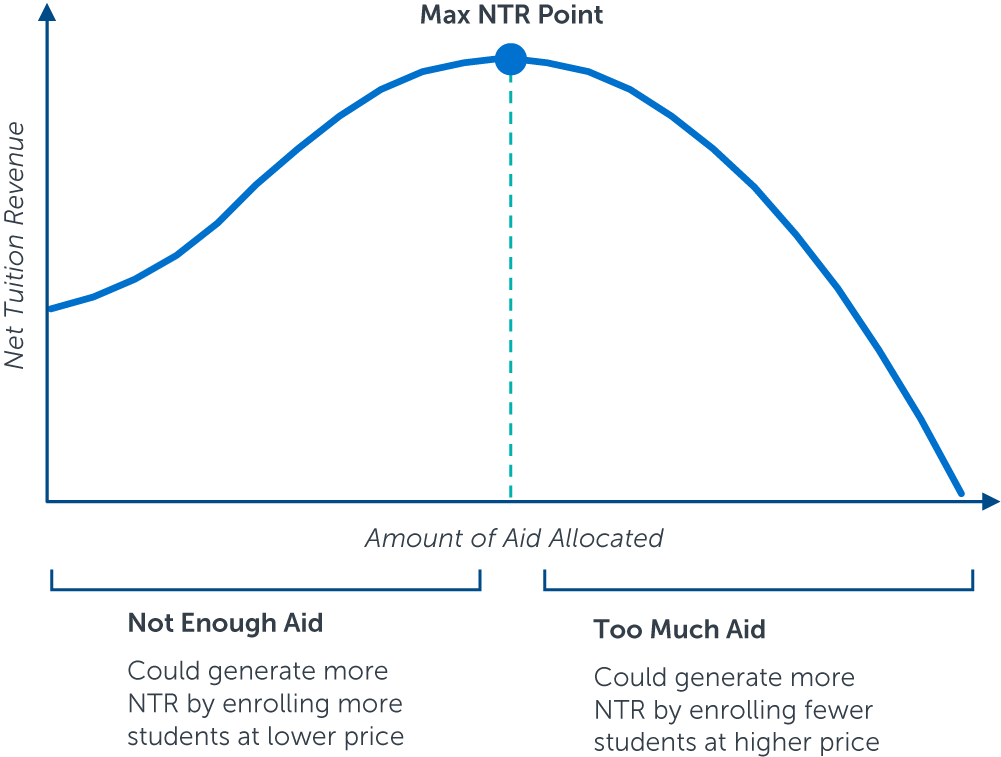Looking to Improve the Academic Quality of Your Law School’s Class? Here Are 3 Tips.
As we all well know, the law school market has been turbulent these last few years. While a multitude of factors led to a spike in law school applications in 2021, if 2022 is any indication, we don’t expect that increase in demand to sustain itself over time. Of course, what hasn’t changed is the pressure law school leaders face to increase or sustain the academic quality of the incoming class.
Here are three tactics we can support you in implementing to recruit your most desirable prospects and meet academic quality goals—even in a volatile market.
Tactic 1: Grow Brand Awareness Through Intent-Based Marketing
Your recruitment marketing is critical to establishing and promoting your unique brand and ensuring your law school stands out. But recruiting prospective law school students is tough, in part, because each student has their own unique motivations and priorities for pursuing a law degree. Responses from the micro-surveys we deploy to prospective law students underscore that some students seek a law degree to improve their communities, while others pursue a legal education to expand opportunities for their families. Understanding what motivates each prospective student allows us to then respond to that student’s individual drivers, meeting them on a variety of journeys to enrollment. In this way, law schools can personalize messaging at scale based on students’ engagement cues and signals.
Equally as important as personalized messaging is timing. To enhance brand awareness and strengthen student interest, your admissions teams must ensure that students get the right information, in the right format, in the right place, and at the exact right moment in their journey. To that end, we launch our intent-based marketing campaigns on an ongoing basis, the same day LSAT scores are released and then regularly as new prospects become available.
Broaden Your Applicant Pool by Leveraging Outreach to GRE Candidates
Now that many law schools accept the GRE in lieu of the LSAT, our work with law school partners indicates that outreach to GRE candidates can expand your prospect pool and help increase racial, ethnic, and industry diversity (e.g., STEM), while extending your geographic reach.
To successfully recruit this audience, it is important to:
Market to them consistently and persistently: Remember that engaging the GRE audience is a longer-term strategy than engaging LSAT takers. These prospects can take longer to decide to get their JD and might look more like a non-traditional student. Know that it can take two years to build your GRE applicant pool, and you likely won’t see a strong return on investment in year one.
Provide clear instructions for applying: There is often confusion on how GRE scores may be used for admission. To clear up any potential confusion for prospective students, include clear and transparent information about your practices and policies around consideration of the GRE in lieu of the LSAT in your marketing materials.
Expand the way GRE candidates are thinking about a JD: Your marketing materials, including your website, should address how a JD can give students a leg up in any A great example to showcase could be an alumnus who had a different educational background (perhaps in STEM), completed their JD, and applied that degree in an unexpected way.
In my work with our Law School Enrollment Services partners, I have found that marketing campaigns based on and driven by student intent have had the most profound impact on improving class quality year over year. Student intent is at the heart of our marketing strategy – from digital ads to emails, micro-surveys, newsletters, and intent-to-deposit campaigns.
SEE HOW ONE LAW SCHOOL’S TARGETED MARKETING INCREASED ITS MEDIAN LSAT SCORE
Tactic 2: Optimize Your Financial Aid Strategy
Cost is one of the biggest factors that increasingly price sensitive prospective students weigh when considering an advanced degree. But many law schools are not optimizing their financial aid strategy, and therefore, not maximizing their net tuition revenue while driving toward other goals. In a turbulent market, it is more important than ever that every aid dollar is used strategically. Because many students will likely have a range of options when choosing which law school to attend, financial aid will play an important role in attracting and supporting your best fit, top-quality students.

Communications about financial aid also tend to be riddled with confusing jargon. Your team needs to communicate clearly about net pricing and aid as well as provide student-focused support throughout the process in efforts to make costs as transparent as possible.
EXPLORE THIS TOOLKIT FOR STRATEGIES TO IMPROVE YOUR AID COMMUNICATIONS
Tactic 3: Improve Your Web Presence
Graduate and professional students – including prospective law students – use university websites to research programs more than any other source, including conversations with friends, family, and peers. And we know from our 2021 survey of 2,000+ prospective students that the quality of university websites can be pivotal in students’ enrollment decisions.
Results from EAB’s 2021 Survey
-
90%
say a well-designed website will improve their opinion of a school.
-
85%
say a poorly designed website will negatively affect their opinion of a school.
-
63%
will abandon websites that are not user-friendly.
LEARN ABOUT THE 6 THINGS MISSING FROM YOUR WEBSITE
One way to improve your web presence is to embed a virtual tour on your website. Knowing that the number of students who are familiar with your institution is not infinite makes it all the more important to provide an interactive experience for all prospective students. Going beyond static pictures or videos of your campus can make all the difference in setting your law school apart. Your virtual tour can highlight notable campus spaces, unique program features, and other compelling benefits (e.g., job opportunities) to show students in an interactive, virtual format that your law school is a good fit for them.
While increasing selectivity and improving academic quality are important, our law school partners often have other priorities as well. Luckily, if done with care, the three tactics outlined above can be applied to broaden the pool of desirable candidates for your school, including increasing enrollment among underrepresented students and expanding geographic diversity.

More Blogs

Why AI is the biggest disruption to your graduate lead pipeline

4 modern tactics to fill your graduate enrollment funnel
